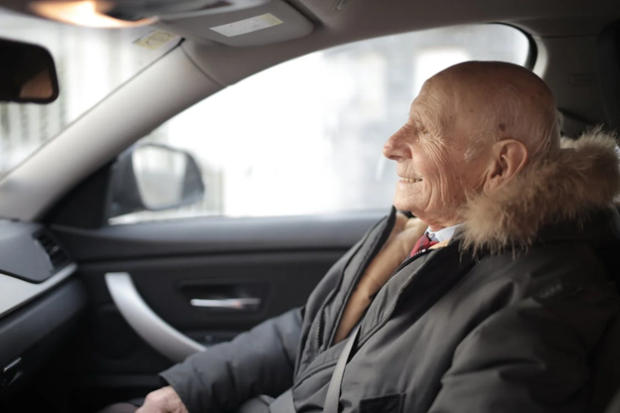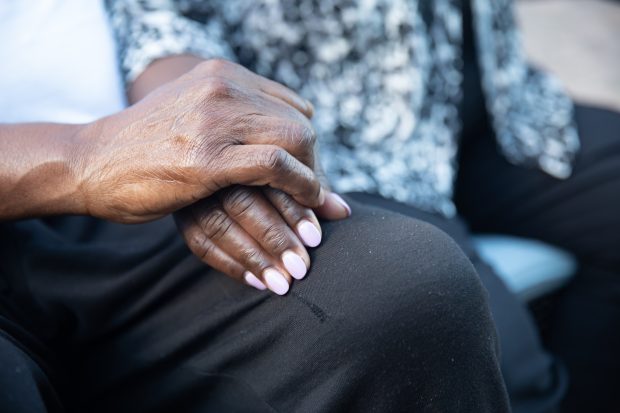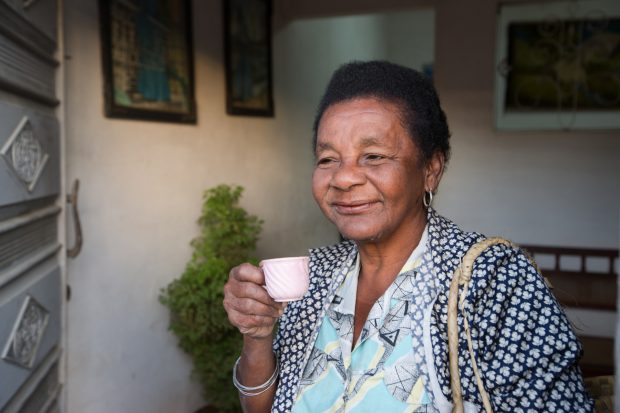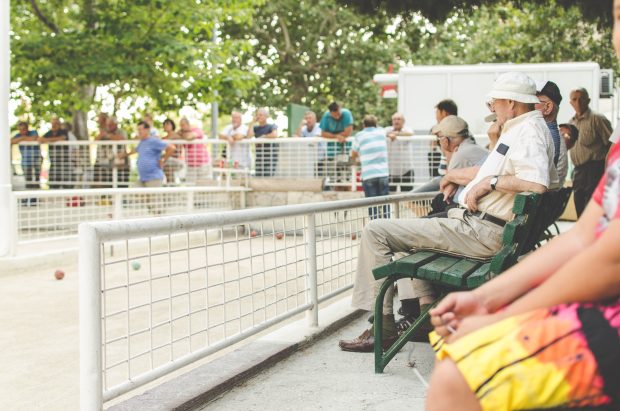
When it comes to helping seniors with mobility problems, there is often a lot of confusion and feelings of uncertainty associated with family members. What steps can be taken to assist a loved one? How do you provide support in the most respectful way? Today’s blog post aims to answer these questions by providing top advice on how to best help those we love who are facing mobility difficulties.
By understanding how to address common issues such as difficulty walking, climbing stairs, or getting into and out of chairs, families will gain the confidence they need during this difficult time – empowering them with the knowledge that they can make their senior relative’s life more comfortable and meaningful. In order for us all to learn more about this important subject matter – from physical assistance techniques to legal options – let’s dive deeper into exactly what it takes when it comes to aiding elderly individuals who face mobility restrictions.
Understanding the Mobility Needs of Seniors
When dealing with mobility problems, understanding the specific needs of seniors is key. With age, many individuals will experience a decline in physical activity, range of motion, and balance, or suffer from chronic conditions that affect their ability to get around. While any individual can experience limited mobility for any number of reasons, seniors are especially vulnerable and need access to tailored care that recognizes both their limitations and their strengths.
Whether this means providing extra support at home with getting around or recommending an assistive device like a cane or walker, it is essential to understand the particular circumstances of each individual so that they receive the best care possible. With our top advice on helping seniors with mobility issues, you can give them back some independence and keep them living comfortably in their homes.
Common Mobility Challenges Faced by Seniors
As we age, many of us begin to encounter mobility challenges – conditions such as arthritis, joint pain, balance issues, and more that can make it difficult or even impossible to move around with a level of comfort and confidence we’re accustomed to. Unfortunately, seniors are particularly susceptible to these kinds of problems that can diminish their quality of life and limit the activities they can enjoy. Thankfully, there is help available for those living with common mobility challenges faced by seniors.
Specific strategies such as physical therapy or assisted devices such as walkers or wheelchairs can help people regain an acceptable level of functioning so they can resume engaging in the activities they love.
Additionally, speaking directly with a healthcare provider about treatment options for common mobility issues allows for a personalized approach tailored specifically to each individual’s situation. Taking the steps necessary to overcome frontline issues is the best way to ensure older adults stay physically active and engaged – no matter what their age may be.
Investing in helpful tools for mobility problems
Investing in the right tools can make a huge difference for seniors with mobility issues. Accessibility aids and other assistive technologies like canes, walkers, wheelchairs, and stair lifts help reduce the strain of movement while providing peace of mind and increased safety.
Though these types of solutions may require an initial investment, many seniors report feeling liberated by being able to engage comfortably with the world around them. In some cases, tools like scooters or electric wheelchairs may help restore independence after a long period of decreased mobility. Namely, electric reclining chairs for the elderly are a great way to help those who have difficulty getting into and out of chairs, allowing them to remain in one place without the need for assistance. These sorts of tools are also beneficial beyond providing physical support – they can also be used to promote mental well-being through increased autonomy.
Assessing Alternatives For Elderly Mobility Assistance
Mobility is an integral part of living, especially for our elderly population. As we age, it can become harder to get around independently and safely, so it’s important to explore alternatives that can help with mobility problems. Fortunately, there are a number of options available – from prosthetics and wheelchairs to installing physical aids like ramps or lift chairs. Each decision should be carefully considered since an individual solution will vary greatly depending on factors such as financial costs, health histories, and existing accessibility features inside the home.
However, no matter the choice made, rest assured that many organizations offer helpful tips and services to assess your own needs and determine the best way of ensuring safe mobility for seniors.
Interesting Programs for Elders with Mobility Issues
A great way to support seniors with mobility issues is by taking part in interesting programs designed especially for them. There are many organizations creating safe and stimulating activities that include everything from chair yoga to slow-paced walking groups to a discussion forum about the challenges of mobility. These programs often involve a multidisciplinary approach involving physical, occupational, and recreational therapists working together, enabling participants to socialize and stay active while facing everyday obstacles due to limited mobility.
Best of all, these experiences can enrich their lives and empower them to overcome challenges, making it easier for them to stay independent and lead fulfilling lives.
Make Home Modifications to Improve Mobility
Home modifications can make an immense difference in the lives of seniors who face mobility challenges. From adding grab bars to widen doorways and hallways, to installing ramps, these changes are designed to create a safe environment for when a person with limited mobility is moving around the home. Even small modifications can work wonders for improving balance, stability, and overall confidence on the part of those struggling with mobility issues.
Such safety measures not only help prevent falls but empower seniors to stay active and independent as they age. With thoughtful attention to making the home more accommodating and accessible, seniors can look forward to living life more easily—be it taking on physical activities or simply moving through the house without fear or apprehension.
Provide Transportation Services

Arranging for reliable transportation services can give seniors the ability to remain independent and can significantly reduce stress levels related to getting to and from important appointments. Whether it’s taking a senior citizen to the grocery store or to a medical appointment, having reliable transportation services can get them there on time and safely. Taking away the worry of how they are going to get there can provide seniors with much-needed peace of mind.
On the other hand, family and friends can also provide a great source of transportation for elderly loved ones. By simply lending a helping hand in getting seniors to and from errands or medical visits, we can come alongside our aging relatives and show them that they are not alone—which is essential for anyone experiencing mobility issues.
Offer Physical Therapy and Exercise Programs
For seniors with limited mobility, physical therapy, and exercise programs can be immensely helpful. Strengthening exercises, in particular, can play a crucial role in helping seniors with mobility issues maintain their independence and quality of life. Therapy is tailored to the individual senior’s needs and goals, so it’s important to work closely with your physical therapist or certified trainer if you or a loved one has mobility problems.
Regular strength-training exercises can make a great difference in both balance and flexibility while reducing stiffness in tight muscles. With improved mobility and stability, a senior can take on activities that might not have been possible before. Whether the goal is to walk without assistance or simply reduce joint pain, physical therapy, and exercise may prove invaluable.
Reducing stress and anxiety in seniors
Helping our senior family members with their mobility challenges can be a difficult task. It’s important to understand that seniors may experience greater levels of stress and anxiety throughout this process, as navigating physical limitations is often a source of fear and frustration. To ease these worries, it’s important to focus on providing simple solutions while maintaining a sense of understanding and openness in the conversation.
Establishing a trusting relationship between the caregiver and senior will go a long way toward finding successful approaches and feeling more relaxed about the situation. Take time out of each day to talk through any potential concerns or problems that have arisen in order to provide comfort and support in reducing stress and anxiety for newly-restricted seniors.
Utilizing Assistive Technology
Mobility can be a major challenge for seniors, but fortunately, there are many assistive devices available to help them stay independent and active. Wheelchairs, walkers, canes, and scooters all offer great levels of support that give more confidence to seniors, allowing them to take on movement-related tasks with greater ease and less fatigue. Not only do they improve quality of life by promoting mobility, but they also provide extra safety when navigating their surroundings or transferring between various positions.
For anyone helping a senior with their day-to-day tasks, it’s worth considering whether these tools might be beneficial to their daily routine. A lot of the time, they can be a great source of comfort and security when it comes to mobility.
Have a Conversation About Safety Measures
Speaking with seniors about safety measures is an important part of ensuring their well-being. Consider having a conversation about the benefits of products such as security systems and motion-sensor lighting, which can be invaluable for those with mobility problems. Not only do these measures provide a layer of protection, but they also bring peace of mind knowing that someone is there to help if needed. Discussing what specific precautions may be beneficial to different individuals or homes will create personalized solutions tailored towards addressing mobility issues while at the same time preserving independence and providing extra safety.
Some other safety measures worth looking into include animal-assisted therapy, door alarms, and accessible bathrooms. Over time, these safety precautions will become second nature and provide seniors with the confidence they need to take on their daily tasks. Sourcing and understanding the various options available can be a big help in creating a safe, secure environment for seniors to live an active lifestyle.
Connect Seniors With Other Community Resources
As seniors age, mobility problems may begin to affect their quality of life. Fortunately, there are many local services and programs available to help those with mobility needs. Researching these community resources provides an invaluable opportunity to connect seniors with the resources they need. Local providers can offer a variety of individualized and specialized options that may not be as easily accessed through other channels.
Whether it’s in-home or at-facility physical therapy, transportation services, support groups, or even specialized adaptive equipment – having a comprehensive list of local providers can help create an environment where seniors can thrive despite mobility challenges.
Benefits of Seeking Professional Support For Senior Mobility Issues
Seeking professional help to address senior mobility issues can be a great way to make sure that your loved ones are able to stay independent and active. Expert advice can identify ways to make navigating their home and community easier, ranging from making modifications within the home such as installing railings or finding services that can help them with everyday needs.
Professional support also provides information about various equipment and programs that could be of significant help in relieving the impact of physical limitations, allowing seniors more joy in activities that had once become more difficult for them. So if you’ve identified mobility issues for a senior in your life, don’t hesitate to seek out solutions with the help of a qualified professional – there are many ways for seniors to remain as independent and comfortable as possible
All in all, there are multiple paths to helping your senior loved ones with mobility problems. From making home modifications to providing transportation services and physical therapy exercises, these tips will help make it easier for seniors to remain active. Equipping them with the appropriate assistive technology can further ensure that their mobility is nonetheless.
Taking time to discuss safety measures is also paramount and it’s also important to connect them with resources they otherwise may not have known about. With a combination of these strategies, it is possible to help seniors maintain their independence and live happily in spite of age-related mobility challenges.






